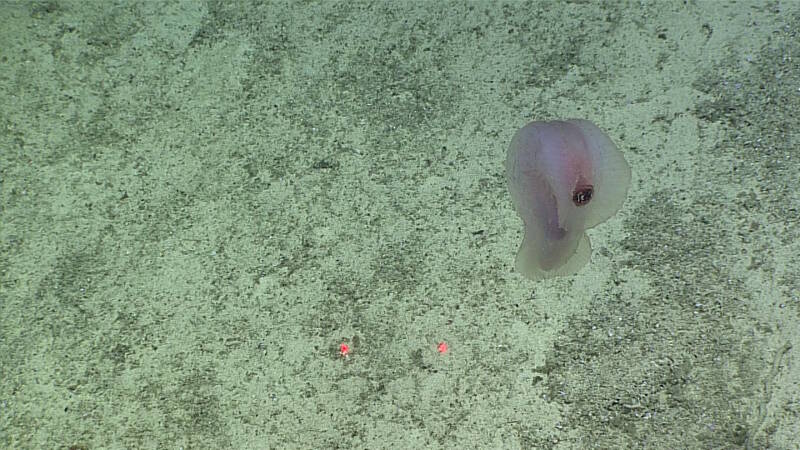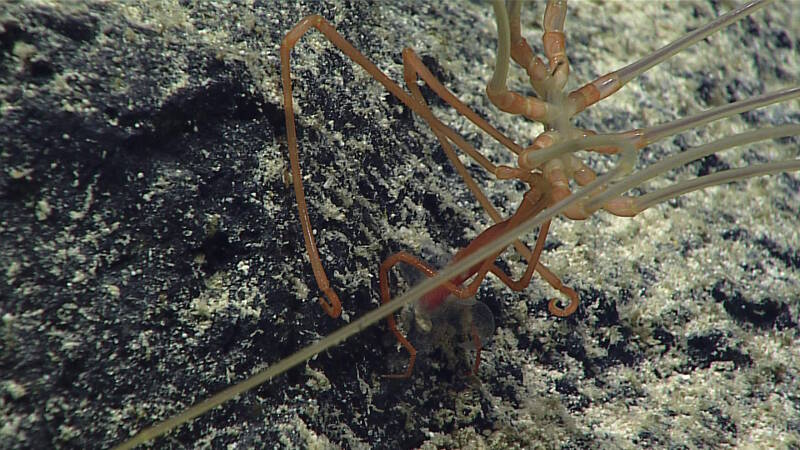For this dive, the ship returned to the vicinity of Baker Island and dove along a steep slope on the southern ridge of Baker Island. Our initial depth was 1,858 meters and the seafloor was composed of large boulders with exposed rock surfaces interspersed with sandy sediments. A rock was collected along this feature. Several large boulders appeared as if they had been transported downslope, possibly via mass wasting events. There were columnar basalts observed along the slope, covered with thick manganese iron-oxide crust; some had a botryoidal texture (i.e., globular appearance). Transiting up the steep slope, several fish species were encountered, including cusk eels, a batfish, rattails, brotula, cutthroat eels, hake, and several deep-sea spiny eels. Corals observed included black corals, octocorals, whip and branching bamboos, and cup corals. The scientists also observed a colonial hydroid, Solanderia, with a possible egg case, large polychaete, and isopod. Sea stars, urchins, and sea cucumbers, including an unknown purple specimen, were observed on rocks or the sediment surface. Other taxa observed included a few different types of sponges (including encrusting types), a field of unknown dead hexactinellid sponges, anemones, pectinid bivalves, stalked crinoids, and xenophyophores on the sediment and rock surfaces. Associates included ophiocanthids, polychaetes, crinoids, and mysid shrimp. Scientists also observed a sea spider eating a cup coral, which had not been observed before. The dive ended on a short pinnacle composed of a basalt pavement seafloor. On this feature, an unknown bifurcated bamboo was observed and the scientists collected small snips of each stalk to determine if it was one or two individuals. Tomorrow, the ship will transit south and dive along the southwestern slope and crest of the summit at Titov Seamount.

